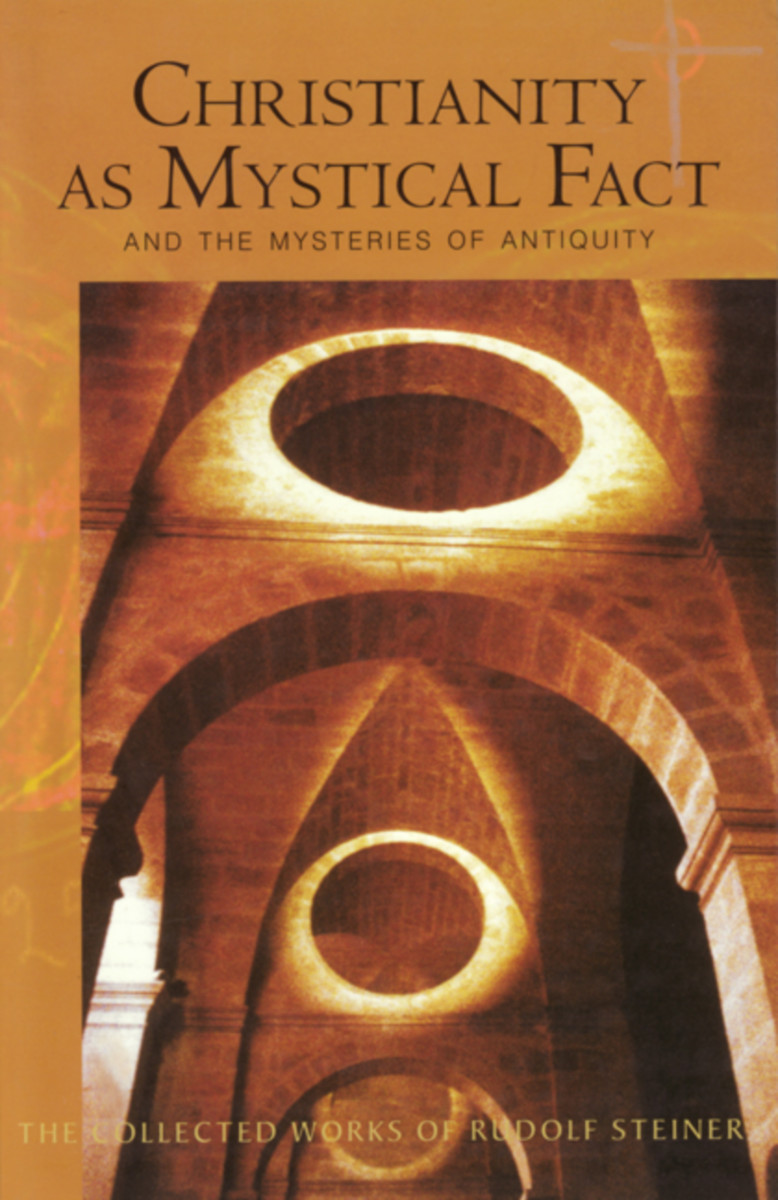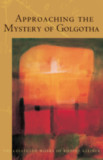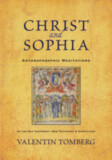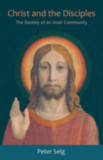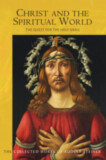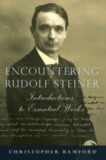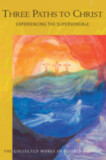Christianity as Mystical Fact
And the Mysteries of Antiquity (CW 8)
Introduction by Christopher Bamford
Preface by Andrew J. Welburn
Translated by Andrew J. Welburn
Afterword by Michael Debus
- Publisher
SteinerBooks - Published
1st May 1997 - ISBN 9780880104364
- Language English
- Pages 240 pp.
- Size 6" x 9"
Written 1902 (CW 8)
“As simultaneously mysticism and fact, Christianity is a breakthrough in the historical development of humanity, for which the mysteries, with the results that they brought about, form a prior evolutionary stage.” — Rudolf Steiner
During the fall and winter of 1901–02, Steiner gave a series of lectures called “Christianity as Mystical Fact” to members of the Theosophical Society. The lectures were rewritten and issued as a book later that year. They mark a watershed in the development of Western esotericism. Steiner wrote of the idea behind his book:
“The title Christianity as Mystical Fact was one I gave to this work eight years ago, when I gathered together the content of lectures given in 1902. It was meant to indicate the special approach adopted in the book. Its theme is not just the mystical side of Christianity in a historical presentation. It was meant to show, from the standpoint of a mystical awareness, how Christianity came into being.“Behind this was the idea that spiritual happenings were factors in the emergence of Christianity, which could only be observed from such a point of view. It is for the book itself to demonstrate that, by ‘mystical,’ I do not in any way imply a vague intuition rather than strict scientific argument. In many circles, mysticism is understood as just that, and therefore it is distinguished from the concerns of all ‘genuine’ science.
“In this book, however, I use the term to mean a ‘presentation of spiritual reality’—a reality accessible only to a knowledge drawn from the sources of spiritual life itself. Anyone who denies the possibility of such knowledge in principle will find its contents hard to comprehend; any reader who accepts the idea that mysticism may coexist with the clarity of the natural sciences, may acknowledge that the mystical aspect of Christianity must be described mystically.”
This is a significant book—for Steiner's own development, that of Western esotericism, and our own understanding of the Christ event. Readers will find the evolutionary development from the ancient Mysteries through the great Greek philosophers to the events portrayed in the Gospels.
Included are an informative introduction and annotated notes by Andrew Welburn and an afterword by Michael Debus, a priest of The Christian Community, who summarizes the book and places it in context.
This book is a translation from German of «Das Christentum als mystische Tatsache und die Mysterien des Altertum» (GA 8). Cover image: Photo of Bordeaux Cathedral by James Nicholls.
C O N T E N T S:
Introduction by Christopher Bamford
Preface by Andrew Welburn
1. The Mysteries and Mysteriosophy
2. The Mysteries and Pre-Socratic Philosophy
3. Platonic Mysteries
4. Myth and Mysteriosophy
5. The Egyptian and Other Eastern Mysteries
6. The Evidence of the Gospels
7. The “Miracle” of Lazarus
8. The Apocalypse of John
6. Jesus in His Historical Setting
10. The Essence of Christianity
11. Christian and Pagan Wisdom
12. Augustine and the Church
Appendix: Original Prefaces and Additional Materials
Afterword by Michael Debus
Translator's Notes
Rudolf Steiner
Rudolf Steiner (b. Rudolf Joseph Lorenz Steiner, 1861–1925) was born in the small village of Kraljevec, Austro-Hungarian Empire (now in Croatia), where he grew up. As a young man, he lived in Weimar and Berlin, where he became a well-published scientific, literary, and philosophical scholar, known especially for his work with Goethe’s scientific writings. Steiner termed his spiritual philosophy anthroposophy, meaning “wisdom of the human being.” As an exceptionally developed seer, he based his work on direct knowledge and perception of spiritual dimensions. He initiated a modern, universal “spiritual science” that is accessible to anyone willing to exercise clear and unbiased thinking. From his spiritual investigations, Steiner provided suggestions for the renewal of numerous activities, including education (general and for special needs), agriculture, medicine, economics, architecture, science, philosophy, Christianity, and the arts. There are currently thousands of schools, clinics, farms, and initiatives in other fields that involve practical work based on the principles Steiner developed. His many published works feature his research into the spiritual nature of human beings, the evolution of the world and humanity, and methods for personal development. He wrote some thirty books and delivered more than six thousand lectures throughout much of Europe. In 1924, Steiner founded the General Anthroposophical Society, which today has branches around the world.


